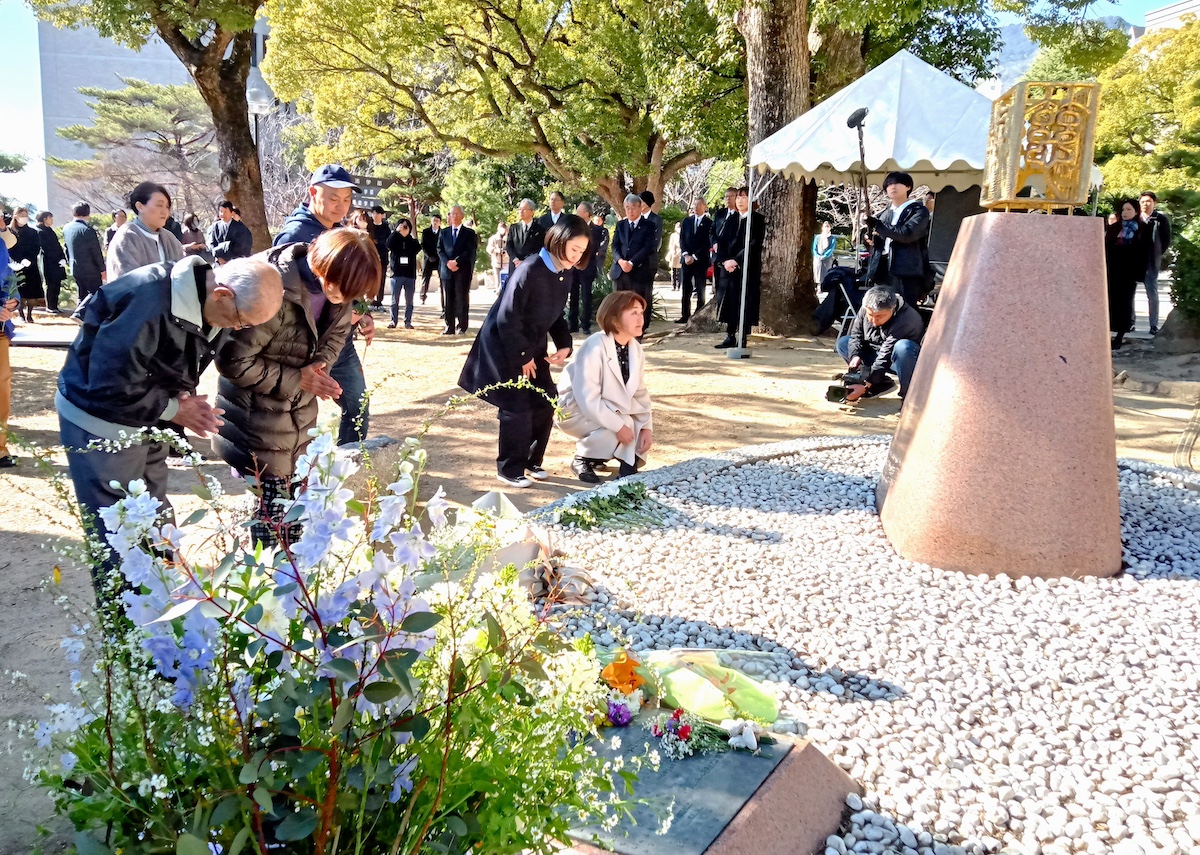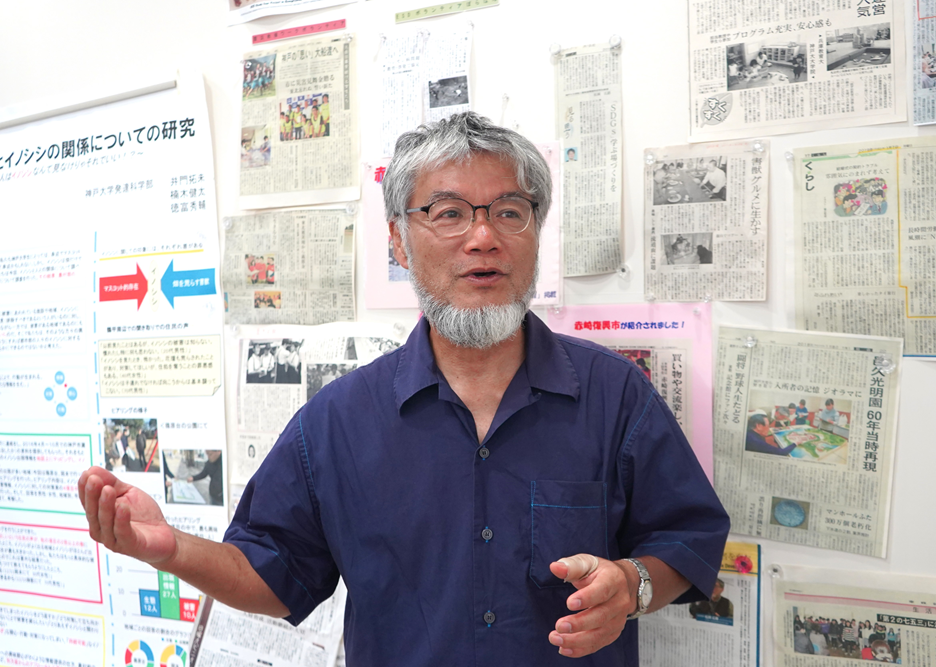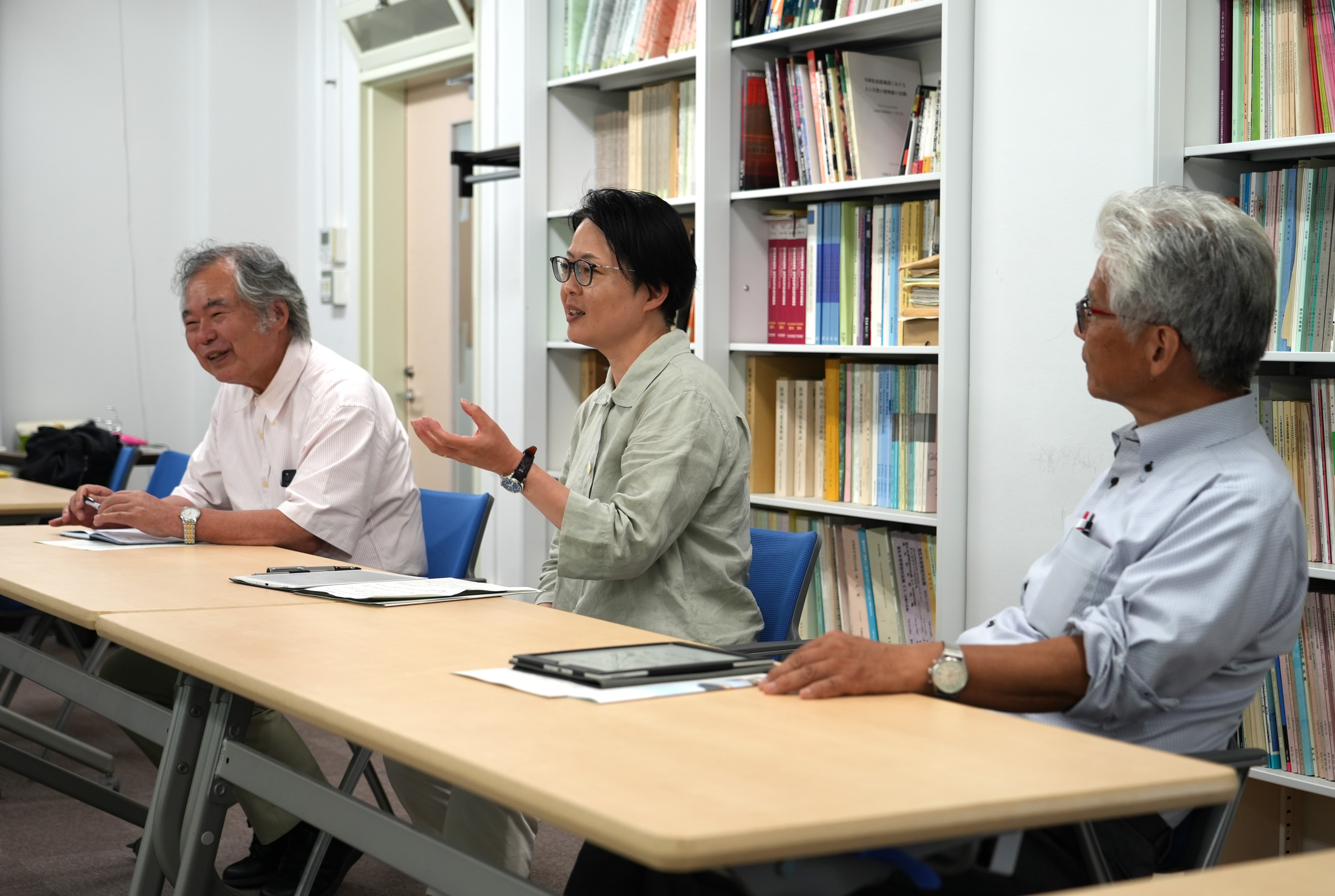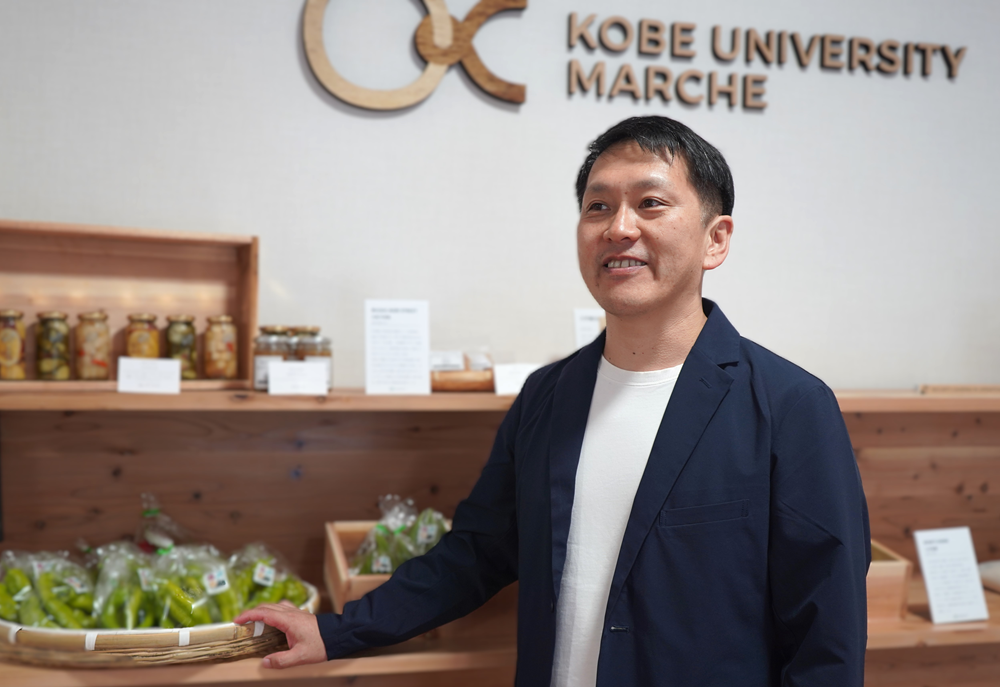The year 1995 is often referred to as ‘the first year of volunteerism’ in Japan. In this year the devastating Great Hanshin-Awaji Earthquake (also known as the Kobe Earthquake) occurred. Students, including those at Kobe University, formed volunteer groups that primarily focused on supporting the survivors of the disaster. That was over 28 years ago. Volunteer activities have continue to grow in response to successive major disasters such as the 2011 Tohoku Earthquake and Tsunami (also known as the Great East Japan Earthquake) and the 2016 Kumamoto Earthquake. Even when faced with the restrictions resulting from the COVID-19 coronavirus pandemic, older students have continued to pass on the baton of volunteering to their juniors.
In mid-October 2022, ‘BOUSAIKOKUTAI, an annual nationwide citizen’s event to promote disaster prevention, was held in Kobe for the first time. To coincide with this event, the Kobe University Office for Promoting Regional Partnership held a symposium that was attended by students, local residents and people involved in volunteerism and joint activities. The symposium aimed to investigate the aforementioned problems facing student volunteers and their impact on the future. What related concerns do students have at Kobe University, the forerunner of student volunteerism? What are the expectations of those involved in regional and volunteer activities? Here we report on the symposium’s findings regarding the present state of student volunteerism and look at what the future holds.
Volunteer activities started a week after the Great Hanshin-Awaji Earthquake
At present, a total of 14 student volunteer groups are registered with the Volunteer Support Division of the Kobe University Office for Promoting Regional Partnerships. Among these groups, 4 are dedicated to disaster-related volunteerism, such as supporting survivors, with around 200 students involved in their activities.
The oldest of these groups is the ‘Students’ Disaster Rescue Team’. It was formed primarily by students at Kobe University’s evacuation center on January 23 1995, in the week after the Great Hanshin-Awaji Earthquake. Beginning by providing support to survivors in places where public aid did not reach, volunteers are involved in community building activities such as holding tea parties in temporary dwellings and later at public restoration housing, and efforts to prevent elderly people from becoming isolated. Nowadays, the initial group has been divided into four. The group ‘Nada Challenge’ continues post-earthquake efforts by holding local festival events in Kobe City’s Nada Ward, and another group holds teaparties in public restoration housing in the HAT Kobe area, and also dispatches volunteers to disaster-stricken areas.
The Kobe University Volunteer Center was started in May 1995 to support survivors of the earthquake. Their activities expanded to meet the region’s needs and now there are 8 groups engaged in activities which include: a sign language club, exchange activities with disabled people, teaparties in post-earthquake residences, and exchanges with children in children’s centers. Part of the group is also affiliated with The Students’ Disaster Rescue Team, and they work together.
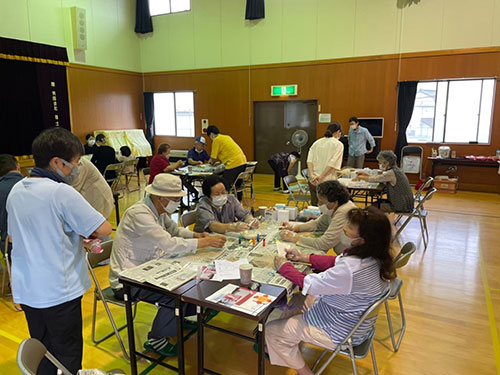
The ‘Tohoku Volunteer Bus Project (Tohoku Volabus)’ was started two months after the March 2011 Tohoku Earthquake and Tsunami occurred. At the time, they based themselves in Tono City, Iwate Prefecture and provided various kinds of support. This included providing a footbath service to evacuation centers in coastal areas that were significantly impacted by the tsunami, as well as handcraft workshops and tea parties in other places in Iwate Prefecture such as Rikuzentakata, Kamaishi and Otsuchi. At present, the bus has travelled to Tohoku a total of 57 times, dispatching over 1700 student volunteers.
The ‘Continuous Disaster Support Project Konti’ was established to help victims of the April 2016 Kumamoto Earthquake. The project began by dispatching student volunteers to Kumamoto, and then continued its activities in Kurashiki, Okayama Prefecture (which was hit by the 2018 heavy rainfall and flooding that affected west Japan) and Marumori, Miyagi Prefecture (which suffered typhoon damage in 2019)
Activity hiatus due to the COVID-19 pandemic
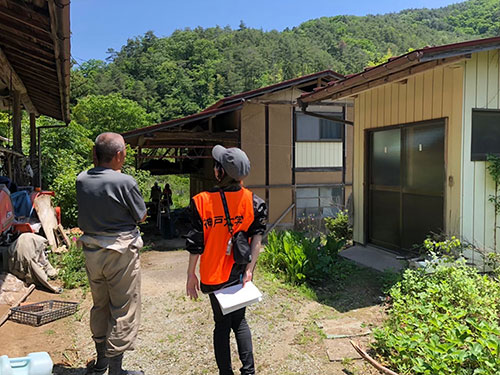
However, due to the COVID-19coronavirus pandemic in 2020, face-to-face classes and activities that involved students gathering together in person (like extracurricular clubs) were forbidden. Inevitably, this led to volunteer activities being put on hiatus. Under these circumstances, each group devised ways of maintaining their connections, such as holding an online photo exhibition of areas affected by the disaster in Tohoku or exchanging letters with people in disaster-hit areas. Even under normal circumstances, there is already the limitation that students can only take part in these activities while they are enrolled at the university (usually a period of 4 years), so every year some of the members of each group change. Therefore, suspending group activities for 2 years had a big negative impact resulting in various issues. It was difficult for students in their final years to pass down their knowledge and connections to the other members of the group.
At the beginning of 2022, the spread of the COVID-19 novel coronavirus slowed and Kobe University resumed face-to-face classes and extracurricular activities. At last, it was possible to recommence volunteer activities. The Students’ Disaster Rescue Team were able to conduct activities in Miyagi Prefecture; in May 2022, they held a casual meetup for local residents in Marumori and were able to take part in the summer festival in Yamamoto in August. In July 2022, after a 2 year hiatus, Tohoku Volabus were able to dispatch student volunteers to Tohoku for the 58th time. (Other activities were recommenced in areas of Iwate Prefecture impacted by the 2011 Tohoku Earthquake and Tsunami, including a wind chime and fan making workshop in Otsuchi and exchanges with a receiving group in Rikuzentakata).
Volunteers express their concerns at the symposium
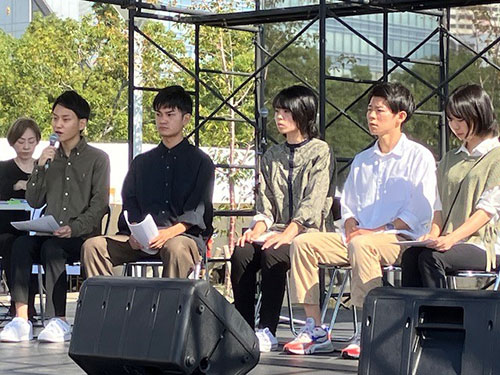
The ‘Bosaikokutai 2022’ was held soon after volunteer activities recommenced at Kobe University. The two-day event took place from October 22 to 23 and was held at HAT Kobe in the city’s Chuo Ward, an area that was hit by the 1995 Great Hanshin-Awaji Earthquake and then redeveloped. This is the biggest event of its kind in Japan, bringing together companies, groups and citizens from all over the country who are involved in disaster prevention-related endeavours. The event began after the Tohoku Earthquake and Tsunami, and has been held every year since 2016. In 2022, 320 disaster prevention-related groups had displays. The ‘ALL HAT Hyogo Disaster Prevention Festival’ (an event attended by Hyogo Prefecture-based disaster-prevention groups) was being held concurrently, making the Bosaikokutai 2022 a particularly lively event.
As previously mentioned, the Kobe University Office for Promoting Regional Partnership took this opportunity to hold a symposium on October 23, in order to explain to a wider audience how our students’ volunteer activities have been continuing since 1995, expanding throughout Japan .Japan. The symposium’s theme was ’Connecting the Community and the University: 27 Years of Nationwide Kobe University Disaster/Recovery Volunteer Activities and the Future of Regional Collaboration’. The symposium began with opening remarks from Kobe University Vice President and Director of the Office for Promoting Regional Partnership OKUMURA Hiroshi, who stated that ‘During the activity restrictions due to the COVID-19coronavirus pandemic, efforts were made through trial and error to continue student volunteer activities. I would like to consider new avenues through which we can continue these activities in the future.’ Next, Specially Appointed Professor YAMAJI Kumiko coordinated a 10 person discussion consisting of 5 students from 4 volunteer groups (including The Students’ Disaster Rescue Team, Kobe University Volunteer Center, Tohoku Volabus and Konti), representatives from regional/volunteer groups and university professors.
Students could clearly express their worries and problems including the following: ‘During the COVID-19 coronavirus (restrictions), there were few opportunities for group members to pass on or learn knowhow. I would like to think about ways for us to form relationships with each other even when our activities are put on hiatus.’, ‘Our group’s survival is at stake because it is difficult to find new members to succeed us. It is not only our connections to Kobe University that are important but also our links to groups outside the university’ and ‘It’s hard to know how to meet disaster victims’ changing needs’.
Local residents and people involved in volunteer activities made the following comments in support of the students: ‘As Kobe University is located in an area that was struck by disaster (the 1995 Great Hanshin-Awaji Earthquake), I would particularly like to see the university’s volunteer activities continue’, ‘There are many lonely elderly people and I am grateful to the students who listen closely to them’(comment from the HAT resident community), ‘Merely by making the effort to travel all the way to disaster-stricken areas, students fulfil survivors’ needs. If students can find where they fit in, they will also be able to see the issues in affected areas‘ (comment from Otsuchi town).
Lastly, Professor KONDO Tamiyo (Kobe University’s Research Center for Urban Safety and Security) who researches disaster recovery, summed up the discussion: ‘Continuation is important, and firstly I would like for the students to invite everyone to work together to achieve this. I think it would be good to create a space where other universities and regions can all learn from one another and continue to think about what we can do.’
There was also an exhibition of posters at the venue on the theme of ‘Disaster/recovery and the university’s future: What Kobe University students have built together throughout Japan’, which featured photos and text related to volunteer activities carried out so far.
Ensuring volunteerism’s continuation
The student volunteer activities that provide disaster and recovery support began due to the 1995 Great Hanshin-Awaji Earthquake. Such activities have continued ever since becoming part of Kobe University’s DNA. Although volunteer activities were originally started spontaneously by students, Kobe University set up a support office for student volunteers in 2008 to provide support through lectures and events. In October 2021, this was reorganized into the Volunteer Support Division of the Office for Promoting Regional Partnership, which now supports a wide range of student volunteer activities. From 2023 onwards, it plans to offer lectures on volunteering and activities that contribute towards society.
Kobe University Professor Emeritus MUROSAKI Yoshiteru, an expert in disaster prevention and mitigation made the following comment on the ‘Bousaikokutai 2022’ event: “There is such a thing as disaster area responsibility. Disaster-stricken areas have the responsibility to repaying victims, to return the favor to those who provided support, and to connect hope to the future of humankind. In order to fulfill these responsibilities, first, the lessons learned from the disaster must be shared with the world, second, they must demonstrate their recovery by overcoming difficulties, and third, they must promote a culture of providing mutual aid and assistance.’ (Translation of a statement in the Kobe Shimbun, Morning Edition October 22, 2022).
As a university located in the area affected by the Great Hanshin-Awaji Earthquake, Kobe University will continue to convey its knowledge of how to assist with disaster recovery, prevention and mitigation through volunteer activities. This includes passing down own recovery experiences.




